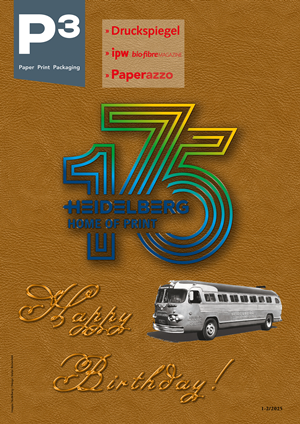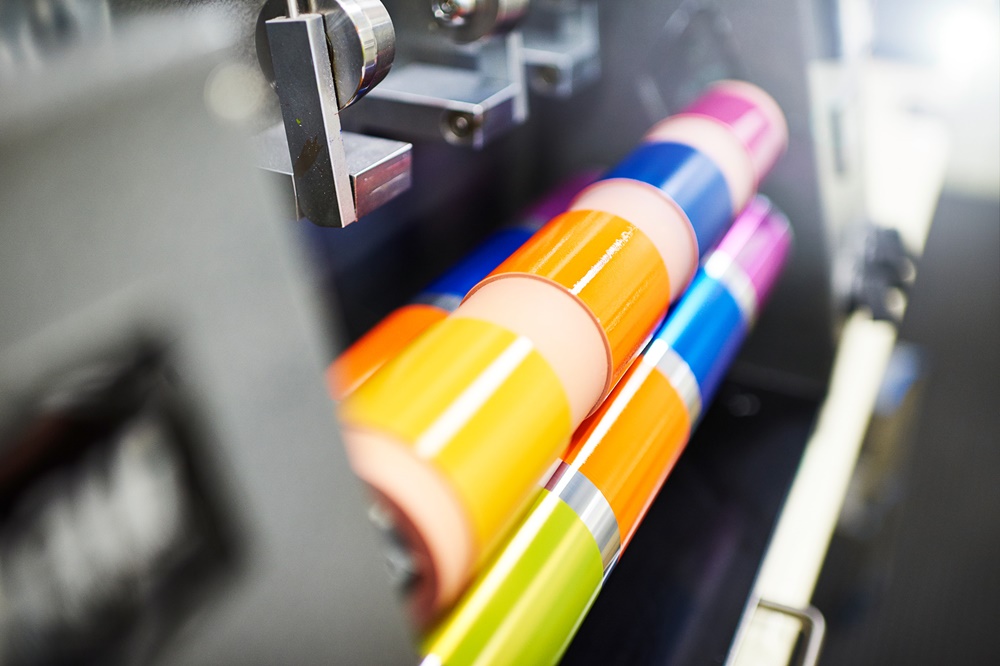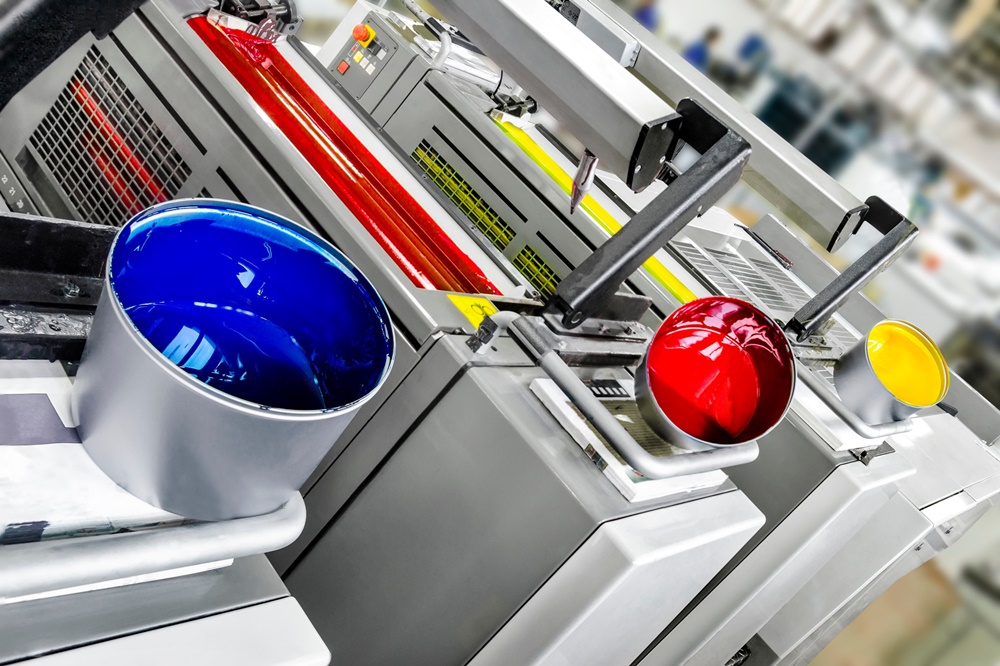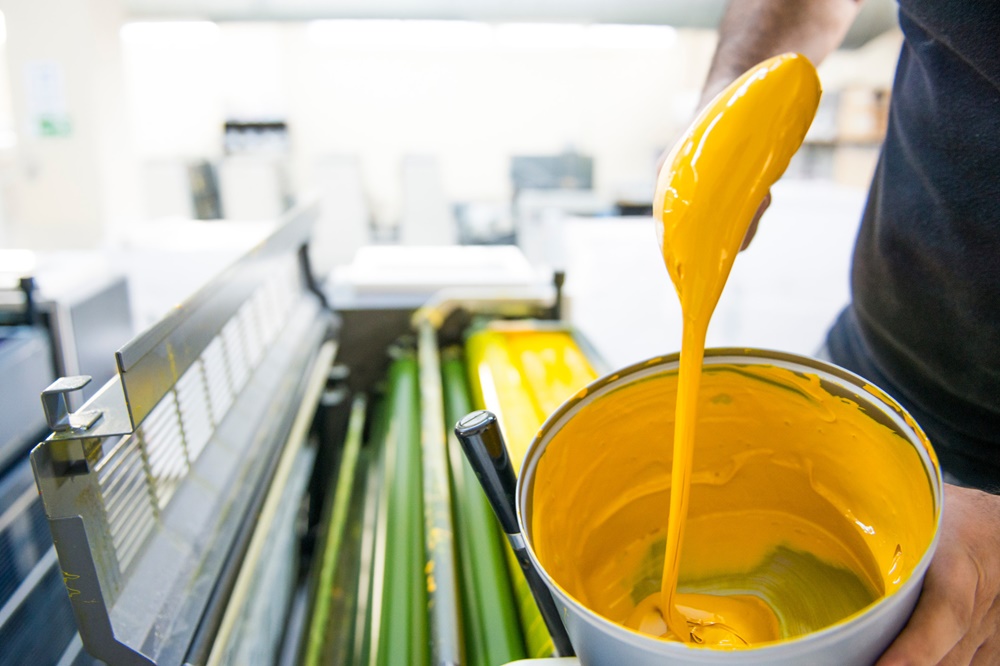P3 5-6/2021 en
Zeller+Gmelin
Product Development With Competence and Speed
Package Printing
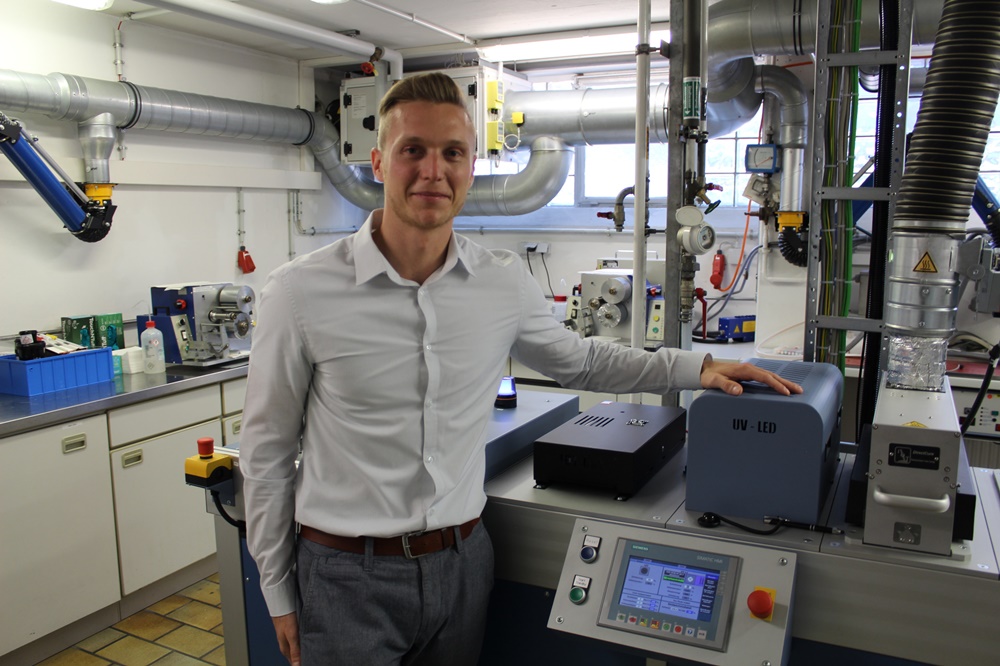
Michael Handl joined Zeller+Gmelin in 2019 and is head of Commercials and Packaging in the R&D department.
LED technology is a success story in many areas. This also applies to the printing industry. LED UV curing of printing inks and coatings is picking up speed in more and more market segments. To keep pace with the fast-growing demand for LED inks among its customers, ink manufacturer Zeller+Gmelin GmbH & Co. KG invests a lot of energy in research and development. In the case of the recently launched Uvalux® LED U540 series, less than a year elapsed between the start of development and the market launch. In this article, Michael Handl explains how such a rapid pace can be achieved for a complex task. He joined Zeller+Gmelin in 2019 and is head of Commercials and Packaging in the R&D department.
Michael Handl joined Zeller+Gmelin in 2019 and is head of Commercials and Packaging in the R&D department.
When Zeller+Gmelin launched the development of the new Uvalux® LED U540 Commercial ink series in November 2019, it was by no means the first product for LED application. Because the buzzwords LED, sustainability and energy saving have determined the trend in all product areas in recent years, the ink manufacturer is currently driving the development of corresponding ink series in all segments. This ranges from offset printing in the commercial and packaging sector to flexo printing in the narrow-web segment or metal or moulded body or cup printing to inkjet printing for labelling and marking. According to Michael Handl, the fact that the current Commercial series could already be presented at a sales seminar in October 2020, i.e. after only eleven months, is on the one hand due to Zeller+Gmelin's core competence in the field of radiation-curing inks and on the other hand to the already existing experience with ink series for LED applications. For example, the company had started development work on the Uvalux® LED U581 FCM series for indirect food contact in February 2019.
Customers receive a sustainable complete solution
Zeller+Gmelin's goal is to round off the range of LED inks for offset printing into a complete package in the course of 2021, explains Michael Handl. The two series Uvalux® LED U581 FCM and Uvalux® LED U540 already fit seamlessly into the overall portfolio. This is characterized by the targeted specialisation in radiation-curing ink systems - irrespective of the technology chosen, such as UV, electron beam or LED curing. In addition, a consistent demand from users for sustainable solutions can be observed across all processes, which is also taken into account. This includes that both the product itself and the entire process chain are designed sustainably.
“With LED-Ink series, we are serving a market that is growing in the long term with sustainable products,” Michael Handl is certain. He cites a number of aspects as reasons for this. “LED has the advantage that energy-saving production is possible. At the same time, ozone is no longer produced in the lamp area, from which the personnel at the machine must be protected by elaborate extraction equipment. Furthermore, the need for lamp replacement and the maintenance effort are noticeably lower due to the significantly longer service life. Since LED systems no longer contain mercury, there is no risk of staff coming into contact with this critical substance. For customers who switch directly from conventionally drying to radiation-curing inks, there is also a time advantage because further processing can take place immediately. This means that more jobs can be completed in a shorter time.”
Specialities complete the ink series
Right from the start of development, Zeller+Gmelin had planned to complete the LED ink series with additional products such as varnishes and cold foil adhesives. A whole range of these products is now available both as LED variants and in FCM quality. In this context, Michael Handl points to a special development success: an LED accelerator in FCM quality. It is intended for cases where increased reactivity is required. This applies, for example, to demanding processes where critical substrates have to be printed. This opens up the possibility for users who do not want to keep an additional ink series in stock to “push” the reactivity of certain jobs with the help of the accelerator if necessary. The application is simple. The accelerator is stirred into the ink before processing. Then it is added to the ink fountain and printing can start.
Printing inks for food compliant packaging
Developing printing inks for the food packaging sector is already a tradition at Zeller+Gmelin. The company launched its first low-migration ink for UV printing as early as 2006, making it a pioneer in this field as far as Michael Handl is aware. Recently there has been an increasing demand for LED offset inks for use in the food sector. The decision to start the development project described here with the Uvalux® LED U581 FCM series should be seen against this background. The abbreviation FCM stands for 'Food Contact Material' and already suggests that the development of such a colour is particularly difficult and requires special know-how. “In contrast to the formulation of a conventional UV ink for the non-food sector, the choice of raw materials is doubly restricted when the criteria LED and food come into play at the same time,” explains Michael Handl. “For the subsequent development of the commercial ink, the experience was then again an advantage to enable the record-breaking short time to market.”
Zeller+Gmelin will certainly be able to use this experience for the developments that are currently in the pipeline. These include, for example, the Uvaflex FCM LED Y581 ink series for flexo and narrow web printing. LED inks for the areas of 'Metal Decoration' and 'Rigid Plastic' as well as inkjet printing are also in the pipeline.
Printing inks and sustainability
Michael Handl sees a lot of need for a development in the future around the whole issue of sustainability. This begins with the selection of raw materials, which naturally complies with guidelines such as the EuPIA exclusion policy, Swiss Ordinance or Nestlé Guidance. In addition, close observation of the market is indispensable to enable customers to plan for the long term with product series of high and consistent quality. As soon as there are signs that a substance may become the focus of legislation, this development must be taken into account. Such forward-looking development work should prevent colour formulations from having to be changed at short notice due to raw material bans. The industry has already experienced more than once how great the effort is to find substitutes and subsequently adapt the formulations. For customers, this can also entail lengthy approval procedures, depending on the market segment.
The fact that Zeller+Gmelin has its own analytics department is of great value to the company. It keeps an eye on market developments and provides advice to ensure that research and development is always up to date and can act with foresight.
Compost, recycle and de-ink
Another topic that will play a major role for Zeller+Gmelin in the future with regard to sustainability is compostability and recyclability, especially for food packaging. For example, for packaging to be considered compostable according to EN/DIN 13432, it must decompose by at least 90 per cent within a maximum of 90 days in an industrial composting plant. To fulfil this, suitable printing inks and varnishes are also required. The C81 ink series for cup printing has now been tested in terms of compostability. For the R&D department at Zeller+Gmelin, this topic is high on the agenda for all further projects, says Michael Handl.
In the course of the sustainability debate, the de-inkability of inks has also come increasingly into focus. Because Zeller+Gmelin pays special attention to the complete recyclability of products printed with inks or varnishes from Eislingen, the company has had various ink series assessed by the independent International Research Association for Deinking Technology (INGEDE) according to their method 11. After all, good de-inkability is an essential prerequisite for recycling paper-based products. All samples were classified as “good de-inkability” and thus all fulfil the requirements of the highest category.
LED technology - entry or change
Michael Handl has already listed the advantages of LED technology in ink curing. Consequently, it is currently steadily gaining market share. The users who are newly deciding to use LED curing can be divided into two groups. The first has been using traditional UV inks and the second has been using oxidative drying systems.
When switching from conventional UV systems to LED technology, the main advantages are the well-known savings in energy, the elimination of ozone formation and mercury use, and the improved processing of very thin and temperature-sensitive materials. “Printers who previously used conventional inks gain a very charming advantage,” says Michael Handl. “Because the ink layer is cured immediately, the print product can be further processed directly afterwards. There is no need to allow for drying times. This aspect is a very decisive factor for most businesses.”
Progress in LED development
With the new LED colour series, Zeller+Gmelin has achieved a number of advances compared to the previous generation. For example, the adhesion and reactivity properties have once again been improved significantly. The ink-water balance has also reached an even higher level.
“Especially on BOPP film, it was sometimes difficult to achieve good adhesion in the past. Here we have taken a big step forward, especially with the Uvalux® LED U581 FCM series,” Michael Handl cites as a concrete development success. For packaging printers in the food sector, it is particularly important that this ink series is just as suitable for printing on foils as on paper and board. This saves companies from having to stock different ink systems for individual material groups. “The Uvalux® LED U540 Commercial ink series also offers a special solution to the problem of optimising abrasion resistance. This means that overpainting can be omitted for certain applications. Abrasion tests, which were carried out on original material such as chocolate boxes and whiskey packaging, showed very good results even with metallised board qualities. The bottom line is that the printer saves a work step and thus reduces its costs.”
Rapid response to market demands
When asked about the expectations Zeller+Gmelin has for the new products, Michael Handl sees the Uvalux® LED U581 FCM ink series as a logical continuation of the successful activities with the existing portfolio in the food packaging sector. The introduction of the Uvalux® LED U540 Commercial series is also intended above all to help open up the commercial printing sector even more. “In general, we are focusing on the company's strengths of providing our customers with high-quality and safe products. Our team consists almost exclusively of ink specialists. This enables us to respond quickly and flexibly to customer demands. Technically competent service is of decisive importance. Its task includes, among other things, recognising the requirements of practice. With this know-how, as well as short lines of communication and open communication within the company, it has already been possible to develop numerous specialities that represent the expected practical solutions for customers. In this way, we want to be able to react to new tasks at short notice also in the future.”
Using the advantages of LED technology
The series of LED offset inks called Uvalux® LED U540 is intended for paper and board print products such as commercials, mailings or forms as well as labels and packaging in the non-food segment. In view of the numerous advantages of LED technology, LED offset printing has become a growth market in the commercial printing segment - both sheetfed and web offset.
Suppliers of printing presses and UV systems have subjected the inks in the new series to thorough print tests and found them to have very good properties. The balanced ink/water ratio and optimised flow properties deserve special mention. Both ensure stable production in the press. The optimally adjusted pigmentation offers a high colour strength, which on the one hand delivers brilliant and detailed print results and on the other hand improves the yield. At the same time, the Eislingen-based company's development department has designed the ink series specifically for high press speeds. In practical tests, stable offset printing was achieved even at speeds of up to 18,000 sheets per hour or 220 m/min in web printing.
The ink series is matched to the wavelength ranges 385 and 395 nm as well as to H-UV applications and adheres very well to various paper and board qualities. In addition to high gloss, the ink layer also has good flexibility. The surface properties are complemented by high scratch and rub resistance as well as good overprintability with all common processes.
Low-migration series for LED UV offset printing
Uvalux® LED U581 FCM are low-migration printing inks for LED UV application in sheet-fed and web offset printing. At the same time, they are classified as low-odour and are therefore particularly suitable for printing food packaging - both paper and film. All raw materials used are up to date with regard to the requirements of the EU chemicals regulation REACH and the EuPIA exclusion policy.
Features of the ink series include a well-balanced ink-water balance and optimised flow properties, so that it ensures stable production printing in the press. Due to the high reactivity, an LED unit is sufficient for reliable curing. The absorption spectrum of the new series is designed for the wavelength ranges 385 and 395 nm and H-UV applications. In addition to the aspect of migration safety, printing with the new LED UV ink series also offers the advantage of lower heat input into the substrate, so that temperature-sensitive substrates can also be processed. It also shows a very low curling tendency, making it ideal for very thin film substrates. Because various cold foils can be overprinted very well, high-quality finishing of the printed products is possible.

